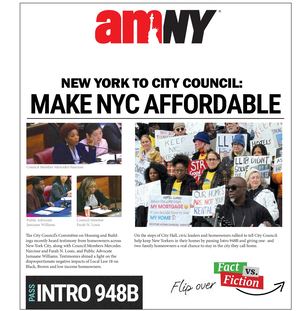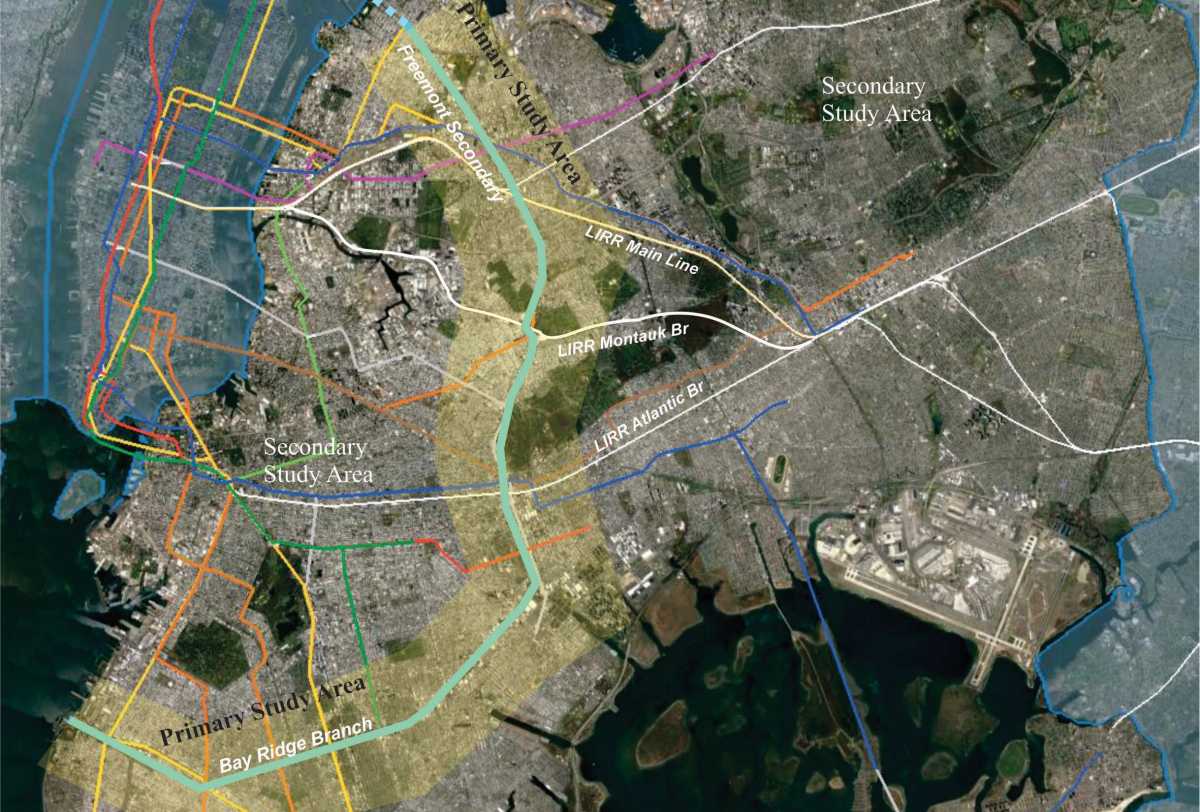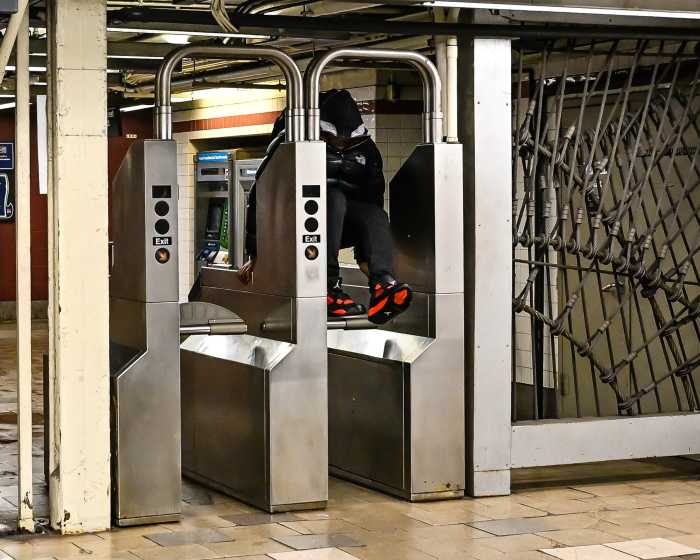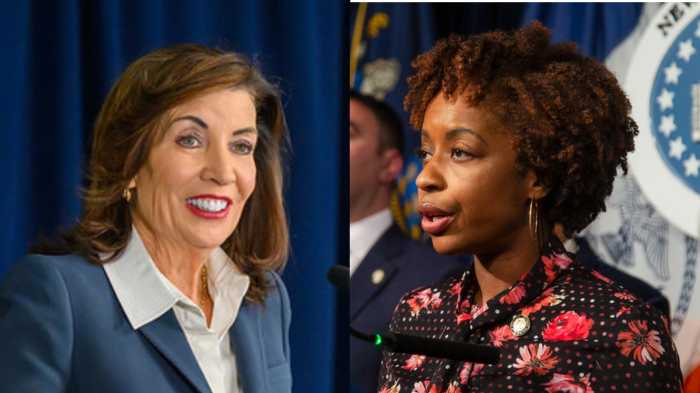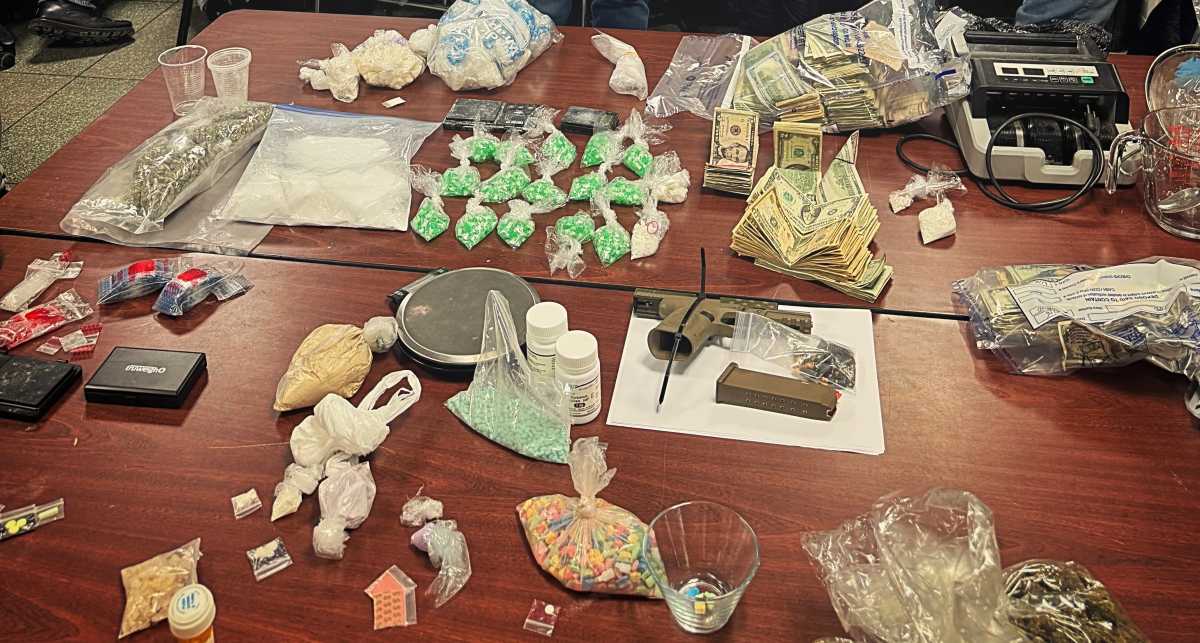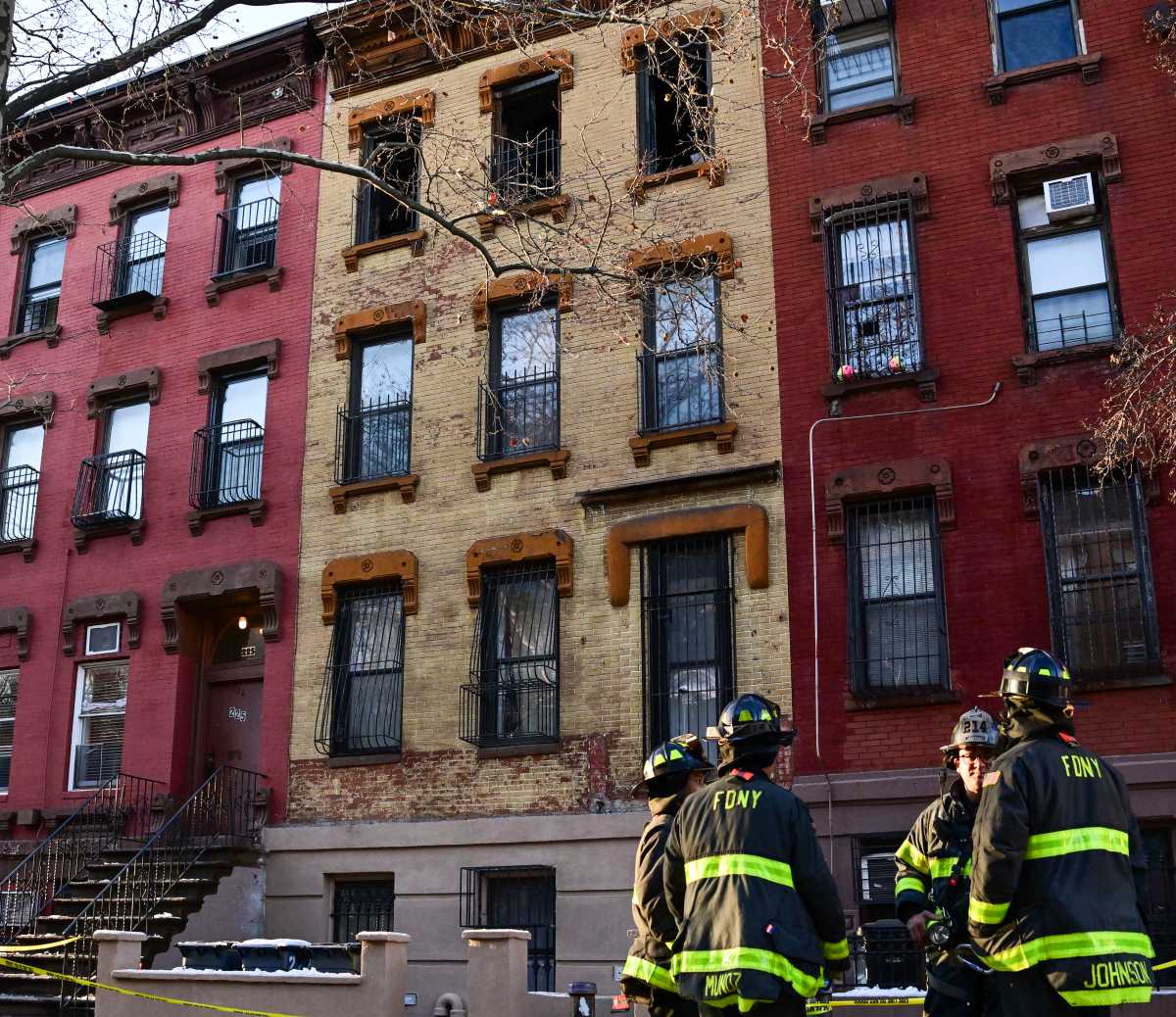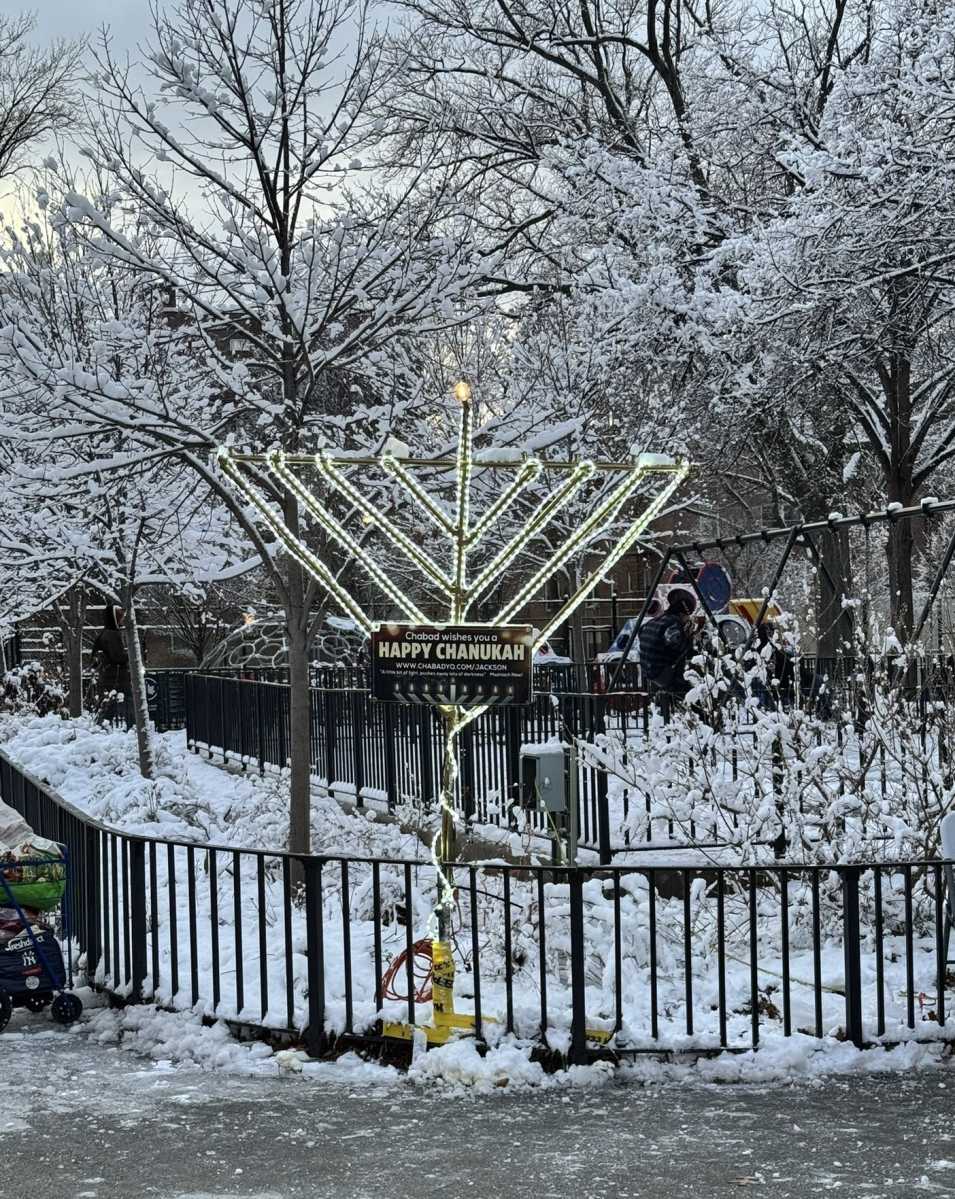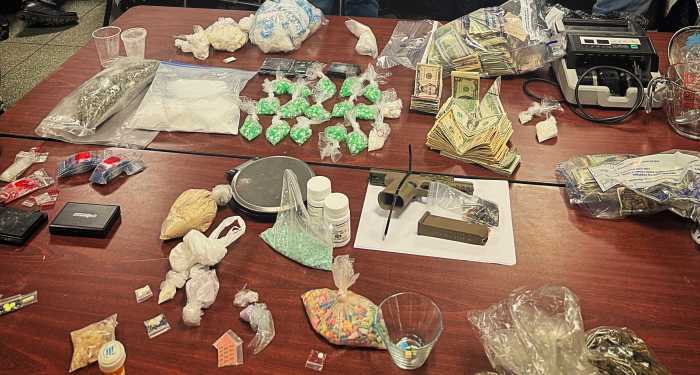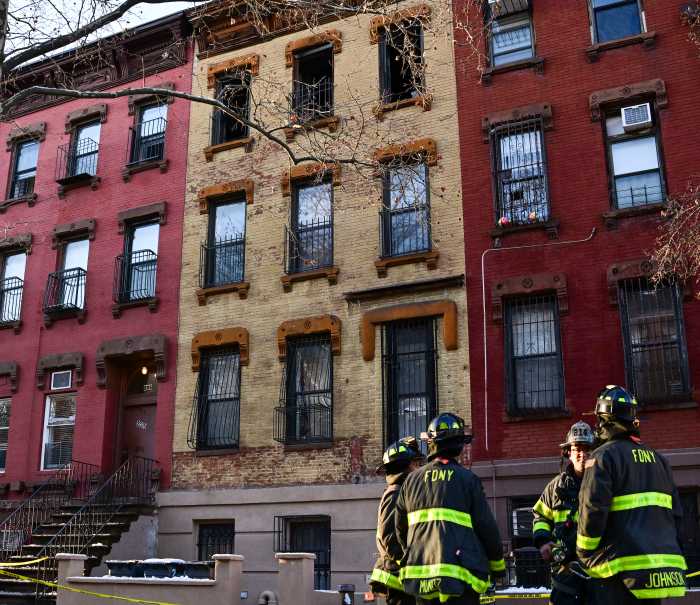The MTA and the Transit Workers Union Local 100 are on the same page in their support for expanding mass transit options in the outer boroughs.
On Jan. 22, the authority announced it has nailed down a contract for an environmental study on the costs of running subway, commuter rail or light rail service on the freight-only Bay Ridge Branch that runs through Brooklyn to Astoria.
According to the MTA, the track that is half-owned by the Long Island Rail Road and half by CSX Transportation could possibly be shared between commuters and freight trains.
“This project is hugely exciting – partly because it is based on the concept of squeezing more out of our already existing infrastructure so we don’t always have to build new subway lines from scratch,” MTA Chief Development Officer Janno Lieber said. “Putting mass transit on the Bay Ridge Branch could allow the MTA to serve more neighborhoods and provide better connections to thousands of people throughout Brooklyn and Queens – all while also creating opportunities for increasing environmentally-friendly freight rail in years to come.”
The 16 miles of track could potentially link riders to intersecting subway lines and the LIRR; one can imagine the likelihood of this with the track crossing 19 subway lines, according to the MTA.
The Bay Ridge Branch crosses from New York Harbor waterfront to the south through Midwood, East New York, Brownsville, Bushwick, Glendale, Middle Village and Elmhurst before reaching Astoria.
The MTA has given the $1.3 million contract to engineering firm AECOM, who will work with a subcontractor referred to by the agency as WSP.
The push to move passengers north and south on the Bay Ridge Branch is reminiscent of the effort in Queens to reactivate the Rockaway Beach Branch on the LIRR, which was shut down in the early 1960s and left to rust across the southwestern Queens landscape.
And the TWU has not forgotten the efforts of former Councilwoman Elizabeth Crowley to have a similar study done as they announced they would endorse her for Queens Borough President in the upcoming special election.
Also announced Wednesday, TWU President Tony Utano said the union carefully considered the all the candidates in the crowded field before settling on Crowley and a spokesman said her role in advocating for the reactivation influenced their decision.
Crowley, the cousin of former Congressman Joe Crowley, represented southwestern Queens in City Council before sitting Councilman Robert Holden beat her in a 2017 general election.
“Throughout her time in the New York City Council, Elizabeth was a steadfast supporter of organized labor and a friend to the thousands of transportation workers who move NY,” TWU Local 100 President Tony Utano said.
The study launched in 2016, found that reactivating the Rockaway Beach Branch would cost $1.3 billion in construction costs alone. The total price tag? $6.7 billion.
